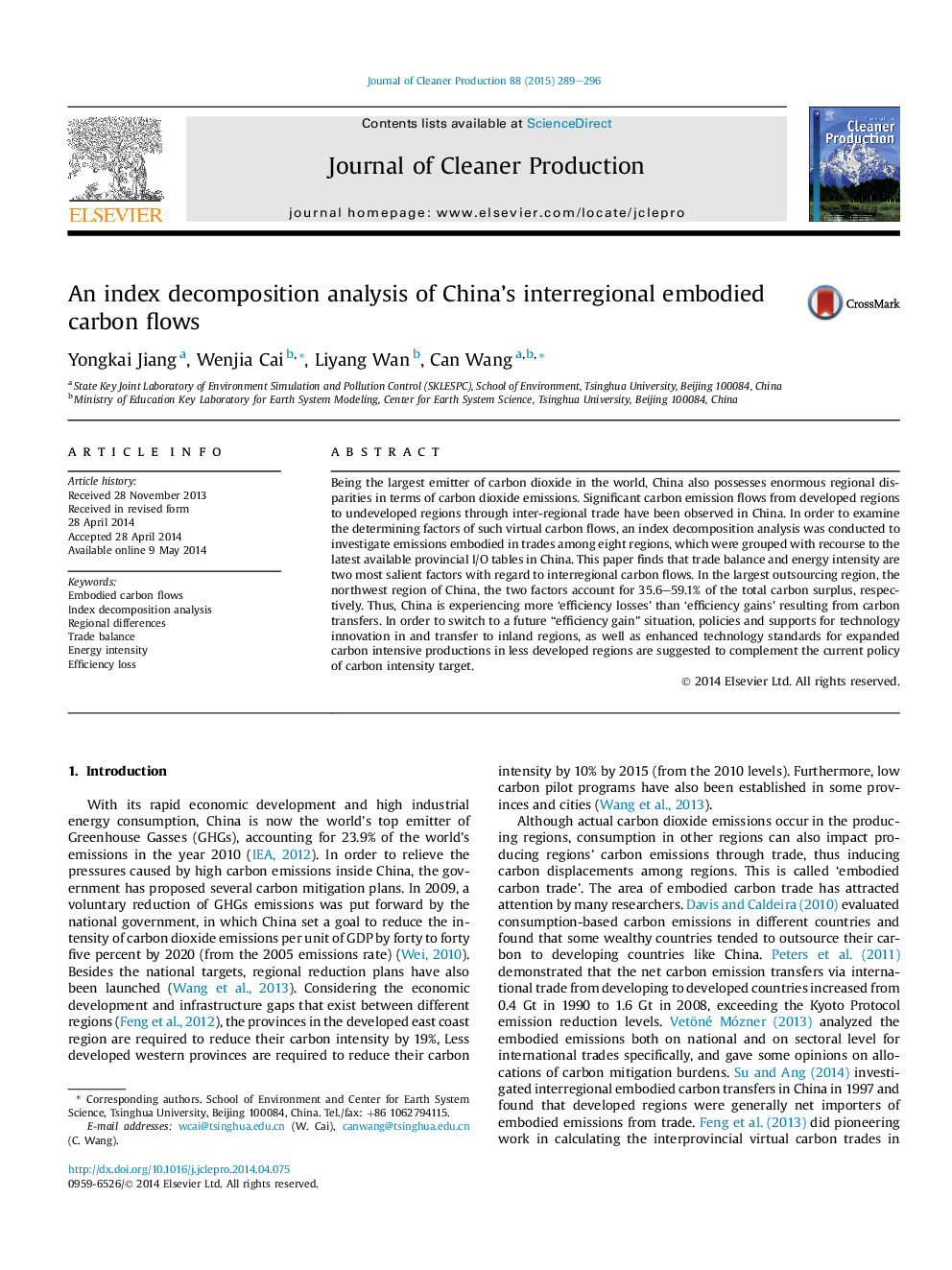| Article ID | Journal | Published Year | Pages | File Type |
|---|---|---|---|---|
| 1744780 | Journal of Cleaner Production | 2015 | 8 Pages |
•An index decomposition analysis was conducted on China's interregional carbon flows.•Trade balance and energy efficiency are two main drivers of carbon outsourcing.•Huge gaps of carbon intensities exist between regions and sectors in China.•China is experiencing more ‘efficiency losses’ than ‘efficiency gains’ with carbon outsourcing.
Being the largest emitter of carbon dioxide in the world, China also possesses enormous regional disparities in terms of carbon dioxide emissions. Significant carbon emission flows from developed regions to undeveloped regions through inter-regional trade have been observed in China. In order to examine the determining factors of such virtual carbon flows, an index decomposition analysis was conducted to investigate emissions embodied in trades among eight regions, which were grouped with recourse to the latest available provincial I/O tables in China. This paper finds that trade balance and energy intensity are two most salient factors with regard to interregional carbon flows. In the largest outsourcing region, the northwest region of China, the two factors account for 35.6–59.1% of the total carbon surplus, respectively. Thus, China is experiencing more ‘efficiency losses’ than ‘efficiency gains’ resulting from carbon transfers. In order to switch to a future “efficiency gain” situation, policies and supports for technology innovation in and transfer to inland regions, as well as enhanced technology standards for expanded carbon intensive productions in less developed regions are suggested to complement the current policy of carbon intensity target.
